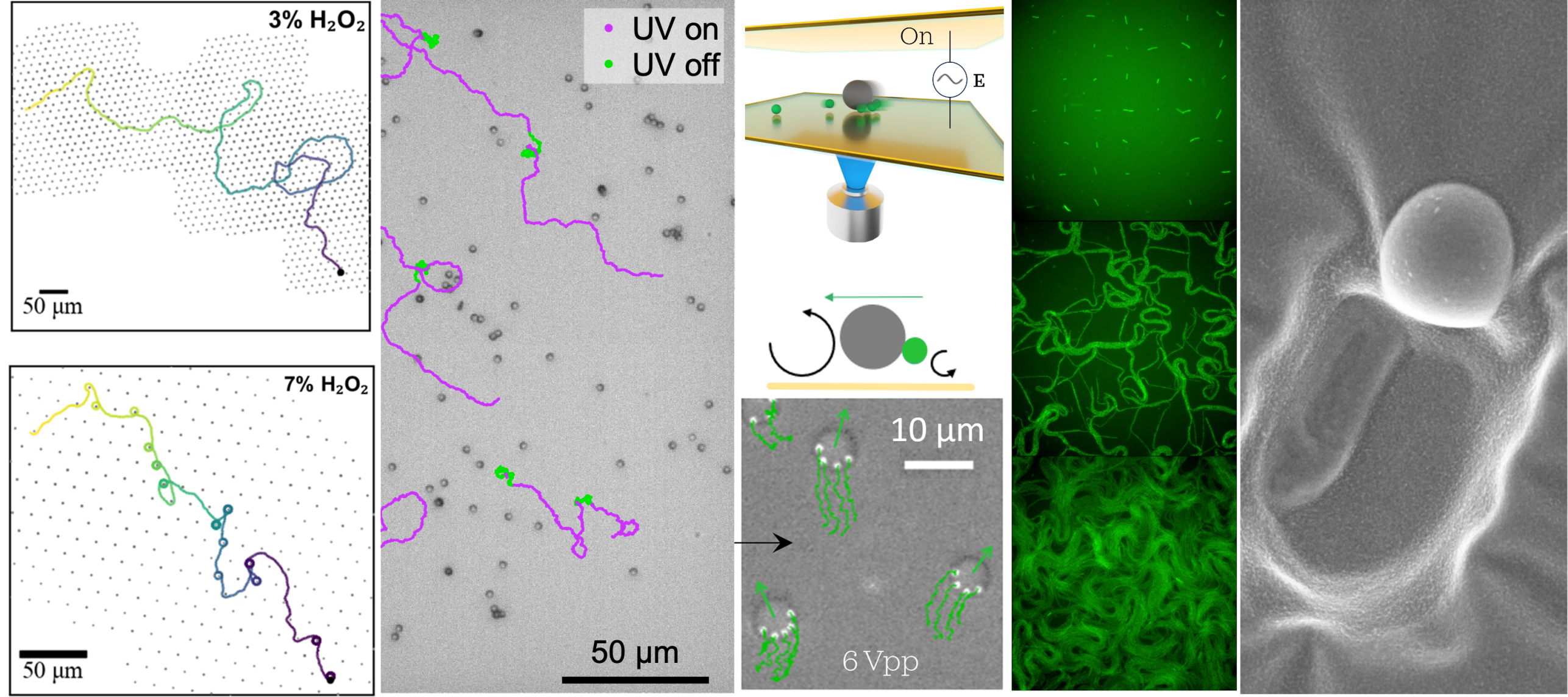Biological and Synthetic Active Systems

In our group we push the development synthetic active systems in order to identify new strategies to control their dynamics. Recently, we have also started to apply guided assembly techniques for the patterning of bacteria in regular arrays. This tool allows us to seed cells within regular lattices to obtain screening platforms, e.g., for antibiotics, and to guide the growth of biological materials. Finally, we combine bacterial and colloidal patterning to develop hybrid active systems.
We focus in particular on active interfaces, i.e. the active analogue of a liquid in coexistence with its vapor in the presence of self-propulsion, on active microswimmers powered by electrohydrodynamic flows that display adaptive propulsion through integration of photoconductive materials and on the emergence of adaptive motility in self-assembled binary colloidal molecules that are both self-propelling and self-steering under an ac electric field due to physical interactions which promote dynamic shape reconfiguration.
We develop microfluidics-based methods for controlling structural features of polymicrobial communities with single-cell resolution in order to design complex microbial communities from bottom-up and to harness the power of motile bacteria by creating biohybrid microrobots in a highly precise and reproducible manner.
